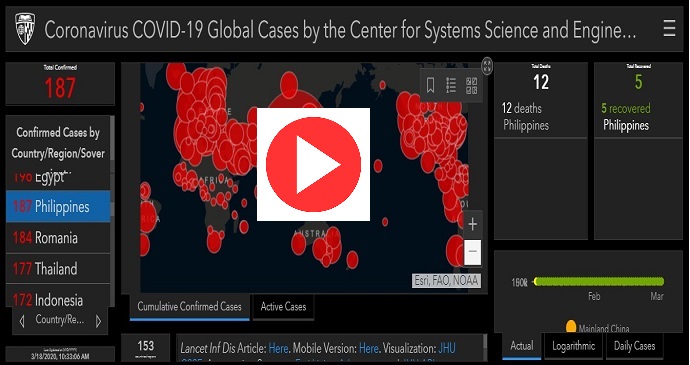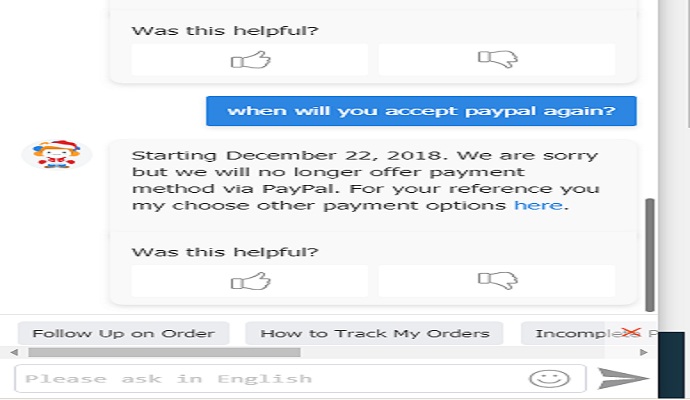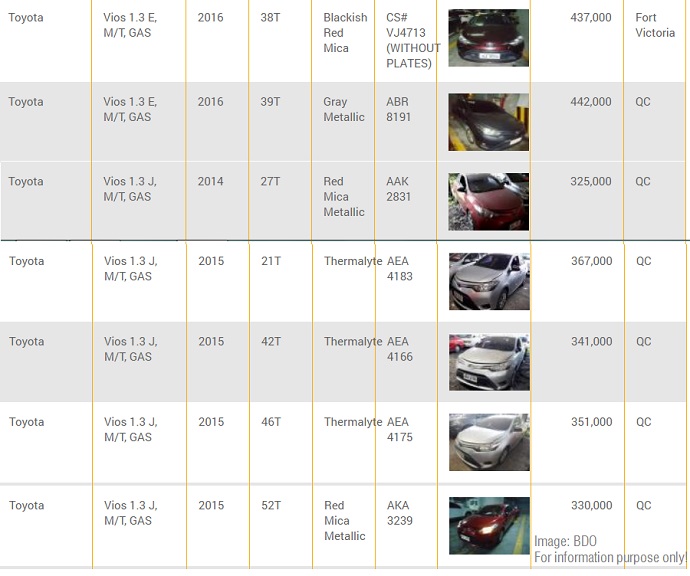
Too many SEO techniques we can read on forums and blogs. SEO experts share their ideas on how to rank our blog or website using specific keywords. Which SEO strategy do we need to use in order for us to not waste time and get the results we really want for our blog/web pages.
Making your web page in the top spot in Google is awesome. If your blog or web page ranked number 1 in Google, you will receive more organic traffic. However, it is not easy to rank a web page in Google nowadays. It requires intelligent SEO planning.
SEO planning is very important. Without SEO plan, you will never get your desired results. It is because ranking a webpage nowadays is very hard compare to the previous years whereas SEO experts can easily rank a specific keywords just use their keywords repeatedly in their article.
SEO Techniques: Popular Search Engine Optimization Tips
Here are the popular SEO techniques I always read whenever I am looking for the best search engine optimization tips. I followed some of these tips, they worked. Other SEO techniques won’t. Other bloggers and webmasters force Google to index their web page or blog post immediately.
SEO or search engine optimization is based on the two major techniques, the on-page seo and the off-page seo. On-page SEO will guide about the things to consider when you design your webpage, when you create an article, etc. While Off-Page SEO will guide you about getting back links and how to make your webpage become popular.
On-Page SEO Techniques
1. Website Analysis
A thorough website analysis helps identify strengths, weaknesses, opportunities, and threats, enabling businesses to enhance their online presence and achieve their goals. Key components of website analysis include assessing navigation, load times, mobile responsiveness, and search engine optimization. By analyzing user behavior through tools like Google Analytics, businesses can gain valuable insights into visitor demographics, preferences, and interactions. This data-driven approach allows for informed decision-making and continuous improvement to ensure that a website remains competitive and aligned with the evolving needs of its target audience.
2. Meta Tags(Title, Description, Keywords)
The Title tag serves as the first impression, encapsulating the essence of a webpage in a concise manner. It not only aids in search engine ranking but also entices users to click through.
The Description tag provides a brief summary of the page’s content, influencing users’ decision to visit the site. Crafting a compelling and informative description enhances the click-through rate and user engagement.
Keywords, once a primary focus, have evolved in significance, with search engines now emphasizing content relevance over keyword density. Strategically incorporating relevant keywords into meta tags and content ensures alignment with user search queries, contributing to improved visibility.
3. Sitemap.xml
By utilizing a Sitemap.xml file, website owners enhance their search engine optimization (SEO) efforts, ensuring that search engines can easily discover and comprehend the site’s structure.
4. Robots.txt
Robot.txt serves as a communication tool between webmasters and web crawlers, instructing search engine bots on which pages of a website should be crawled and indexed. The robots.txt file, residing in the root directory of a website, contains directives that guide search engine spiders about areas they are permitted to access and areas they should refrain from visiting.
Webmasters utilize this file to enhance website efficiency, prevent indexing of sensitive information, and manage crawl budget effectively.
5. Site Loading Speed
Site loading speed is not merely a technical metric but a critical factor that directly influences user engagement and satisfaction. Websites that load swiftly contribute to a positive user experience, reducing bounce rates and fostering a sense of efficiency.
Employing techniques such as image compression, browser caching, and efficient coding practices are essential steps in enhancing a website’s loading speed.
6. Website URL Structure
Crafting an effective website URL structure is paramount for optimizing user experience and search engine visibility. A well-organized URL not only enhances navigation but also contributes significantly to a site’s overall SEO performance. It is crucial to keep URLs simple, concise, and reflective of the content they lead to. Including relevant keywords in the URL can boost search engine rankings and provide users with a clear indication of the page’s subject matter.
Avoiding unnecessary parameters and dynamic characters in URLs is also recommended, as clean and static URLs are more favorable for indexing.
- Bad URL: example.com/p1234asjdkf?
- Good URL: example.com/seo/keyword-research
Also, as you have noticed in InvestmentTotal.com, it has a breadcrumb and clean navigation, we crafted for users not for search engines.
7. Site Designing
Effective site designing goes beyond aesthetics; it considers user navigation, accessibility, and responsiveness to different devices. A well-designed website not only attracts visitors but also ensures they can easily find and interact with the content. It requires a balance between visual appeal and functionality, with careful attention to detail.
8. Image Alt Tags
Image Alt Tags, also known as alternative text or alt attributes, play a crucial role in enhancing website accessibility and search engine optimization (SEO). These tags provide a textual description of images, enabling individuals with visual impairments to comprehend the content through screen readers.
Off-Page SEO Techniques
1. Social bookmarking
Social bookmarking is a pivotal off-page SEO technique that involves saving and organizing website links on various online platforms. This method contributes significantly to enhancing a website’s visibility and search engine ranking. By bookmarking relevant web pages on popular social bookmarking sites such as Reddit, Digg, and StumbleUpon, users can create a network of high-quality backlinks, driving more traffic to their websites.
Social bookmarking facilitates the sharing of valuable content, fostering community engagement and expanding the reach of the website. The increased social signals generated through this process can positively influence search engine algorithms, ultimately improving the site’s organic search performance. As part of a comprehensive off-page SEO strategy, social bookmarking not only boosts a website’s online presence but also establishes it as a valuable resource within its niche, creating a virtuous cycle of visibility and credibility in the digital landscape.
2. Directory submission
Directory submission is a pivotal off-page SEO technique that plays a crucial role in enhancing a website’s visibility and search engine rankings. By submitting a website’s URL to various online directories, businesses can create valuable backlinks, improving their overall link profile.
These directories act as digital catalogs, categorizing websites based on their niche or industry. When search engines crawl these directories, they discover the submitted URLs and index them, positively impacting the website’s organic search performance.
3. Classified Ads
Classified ads play a pivotal role in off-page SEO strategies, serving as valuable tools to enhance online visibility and drive targeted traffic to a website. Leveraging classified ads effectively involves crafting compelling and unique ad copy that incorporates relevant keywords and a clear call-to-action.
By strategically placing these ads on high-authority classified websites, businesses can not only tap into a broader audience but also strengthen their backlink profile. The backlinks generated through classified ads contribute to improved search engine rankings, as search algorithms often consider the quality and relevance of external links.
4. Local business listing
This off-page SEO technique involves the inclusion of accurate and detailed information about a business, such as its name, address, phone number, and website, in various online directories and platforms. By meticulously optimizing these listings with relevant keywords and ensuring consistency across different platforms, businesses can significantly improve their local search engine rankings.
5. Forum posting
Forum posting is a pivotal off-page SEO technique that plays a crucial role in enhancing a website’s online presence and search engine rankings.
By actively participating in relevant forums within a particular niche, businesses and individuals can engage with their target audience, establish authority, and create valuable backlinks. When crafting forum posts, it is essential to contribute genuinely to discussions, providing insightful and helpful information that adds value to the community.
6. PPT Submissions
Crafting and submitting well-designed PowerPoint presentations to reputable platforms not only enriches the digital landscape but also contributes significantly to backlink generation. PPT submissions offer a dynamic avenue for presenting valuable content in a visually engaging format, capturing the attention of a diverse audience.
By incorporating relevant keywords, optimizing images, and providing insightful information, one can not only establish authority within a specific niche but also drive targeted traffic to the associated website. The incorporation of concise and compelling content within these presentations can lead to increased brand recognition and improved search engine rankings.
7. QNA(question and answer)
Engaging in Q&A discussions allows individuals to seek clarification on intricate off-page SEO strategies and gain valuable insights from experienced professionals. Whether it’s about link-building, social media optimization, or content promotion, participants can pose specific queries to address their unique challenges.
8. Web2.0
Web 2.0, characterized by interactive and collaborative user-generated content, offers a unique platform for implementing off-page SEO strategies. One potent technique involves leveraging Web 2.0 properties such as blogs and social media platforms to create high-quality backlinks. Crafting engaging and informative content on these platforms not only attracts a diverse audience but also establishes credibility, earning valuable inbound links.
Active participation in community discussions and forums within the Web 2.0 sphere contributes to a positive online reputation and boosts off-page SEO.
9. Blog writing and submission
relevant blog content serves as a powerful tool to attract a targeted audience, generate quality backlinks, and establish domain authority. Effective blog writing involves the integration of well-researched keywords, addressing user queries, and providing valuable insights to readers.
Once the blog is meticulously crafted, strategic submission to reputable and niche-specific platforms amplifies its reach and impact. This not only broadens the content’s exposure but also fosters a network of high-quality backlinks, signaling search engines about the credibility and relevance of the website.
Embracing a consistent and well-thought-out blog writing and submission strategy not only contributes to improved off-page SEO but also positions a website as an authoritative source within its industry, thereby driving organic traffic and bolstering overall digital presence.
10. Infographic
An infographic serves as a powerful visual tool to convey off-page SEO techniques, elucidating complex concepts with clarity and conciseness. In the realm of search engine optimization, off-page strategies play a pivotal role in enhancing a website’s visibility and authority.
An expertly crafted infographic can encapsulate the intricacies of off-page SEO, illustrating the significance of backlink building, social media engagement, and influencer outreach. By presenting a cohesive and visually appealing overview, it facilitates a comprehensive understanding of how these techniques contribute to higher search engine rankings.
Each element within the infographic, from vibrant graphics to succinct captions, serves as a cog in the machinery of knowledge dissemination, ensuring that the audience grasps the nuances of off-page SEO in an accessible and engaging manner.
Which SEO techniques do you prefer? In InvestmentTotal.com, I don’t care too much about SEO. In my experience, the more quality articles I wrote for my readers, the better. Don’t get me wrong. Some bloggers and webmaster misused the SEO, other abused SEO.
In what way do bloggers and webmaster do misused SEO? They just write, they don’t include the keywords (most searched keywords and relevant keywords) in their article. They abused SEO because they perform keyword stuffing. They use the same keywords over and over again in their articles.
SEO Techniques I Personally Use
I perform basic On-Page search engine optimization. Keywords in the title tag, in the meta description, keywords should be bold, in H2 and H3 and in ALT text in image. Aside from that SEO basic, I just write naturally. I do make sure that my articles is easy to understand by humans.
Whenever we want expert advice, we should know who is the real SEO expert. This time, let me share some of the SEO tips from Matt Cutts;
SEO Tips from Matt Cutts
He adviced to use the Web Master Tool. Do not compete with the high competition keyords instead use less competitive keywords. Do not forget to add few targetter keywords. When creating a website or blogs, create them fro users not for search engines. And when writing a blog post, we should just write naturally and avoid spam.
Related: How to Create a Good Blog Post
What about you? Do you prefer to spend a lot of time in performing SEO or do you have your own SEO techniques used in your blog or website? Share your opinions and other SEO strategy in the comment box. Let us find out which SEO techniques is the effective one.









hi I want to learn SEO can you teach me
These mentioned techniques are really helpful for search engine optimization. Just make sure focus on quality rather than quantity in back linking process.
Finally thanx for the good read and by the way how much time you took to analyze and post it? just curious!!!
techbla.com
Interesting post! Thanks for writing it.
techbla.com
Finnaly a good read Thanx.. :)
techbla.com